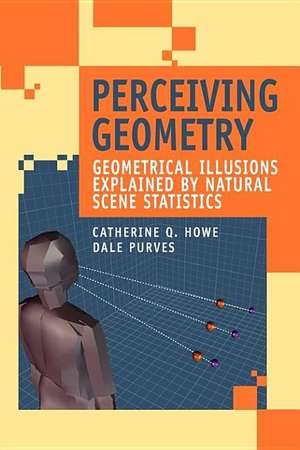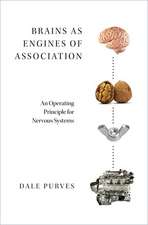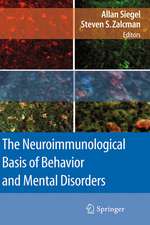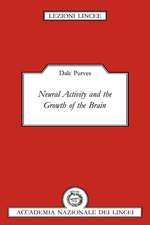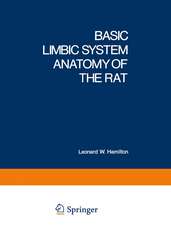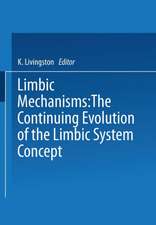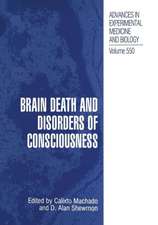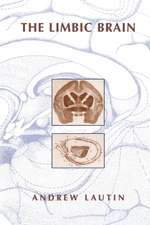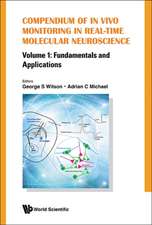Perceiving Geometry: Geometrical Illusions Explained by Natural Scene Statistics
Autor Catherine Q. Howe, Dale Purvesen Limba Engleză Paperback – 8 dec 2010
| Toate formatele și edițiile | Preț | Express |
|---|---|---|
| Paperback (1) | 547.65 lei 39-44 zile | |
| Springer Us – 8 dec 2010 | 547.65 lei 39-44 zile | |
| Hardback (1) | 614.12 lei 6-8 săpt. | |
| Springer Us – 16 aug 2005 | 614.12 lei 6-8 săpt. |
Preț: 547.65 lei
Preț vechi: 684.56 lei
-20% Nou
Puncte Express: 821
Preț estimativ în valută:
104.81€ • 110.57$ • 87.35£
104.81€ • 110.57$ • 87.35£
Carte tipărită la comandă
Livrare economică 30 decembrie 24 - 04 ianuarie 25
Preluare comenzi: 021 569.72.76
Specificații
ISBN-13: 9781441938008
ISBN-10: 1441938001
Pagini: 136
Ilustrații: VIII, 126 p. 53 illus., 10 illus. in color.
Dimensiuni: 155 x 235 x 7 mm
Greutate: 0.21 kg
Ediția:Softcover reprint of hardcover 1st ed. 2005
Editura: Springer Us
Colecția Springer
Locul publicării:New York, NY, United States
ISBN-10: 1441938001
Pagini: 136
Ilustrații: VIII, 126 p. 53 illus., 10 illus. in color.
Dimensiuni: 155 x 235 x 7 mm
Greutate: 0.21 kg
Ediția:Softcover reprint of hardcover 1st ed. 2005
Editura: Springer Us
Colecția Springer
Locul publicării:New York, NY, United States
Public țintă
ResearchCuprins
The Geometry of Natural Scenes.- Line Length.- Angles.- Size.- Distance.- The Müller-Lyer Illusion.- The Poggendorff Illusion.- Implications.
Textul de pe ultima copertă
Understanding vision, whether from a neurobiological, psychological or philosophical perspective, represents a daunting challenge that has been pursued for millennia. During at least the last few centuries, natural philosophers, and more recently vision scientists, have recognized that a fundamental problem in biological vision is that the physical sources underlying sensory stimuli are unknowable in any direct sense. In vision, because physical qualities are conflated when the 3-D world is projected onto the 2-D image plane of the retina, the provenance of light reaching the eye at any moment is inevitably uncertain. This quandary is referred to as the inverse optics problem. The relationship of the real world and the information conveyed to the brain by light present a profound problem. Successful behavior in a complex and potentially hostile environment clearly depends on responding appropriately to the sources of visual stimuli rather than to the physical characteristics of the stimuli as such. If the retinal images generated by light cannot specify the underlying reality an observer must deal with, how then does the visual system produce behavior that is generally successful?
Perceiving Geometry considers the evidence that, with respect to the perception of geometry, the human visual system solves this problem by incorporating past human experience of what retinal images have typically corresponded to in the real world. This empirical strategy, which is documented by extensive analyses of scene geometry, explains many otherwise puzzling aspects of what we see (i.e., the so-called "geometrical illusions"), providing the best indication to date as to how perceptions of the geometrical aspects of the world are actually generated by the brain.
Perceiving Geometry considers the evidence that, with respect to the perception of geometry, the human visual system solves this problem by incorporating past human experience of what retinal images have typically corresponded to in the real world. This empirical strategy, which is documented by extensive analyses of scene geometry, explains many otherwise puzzling aspects of what we see (i.e., the so-called "geometrical illusions"), providing the best indication to date as to how perceptions of the geometrical aspects of the world are actually generated by the brain.
Caracteristici
There is no direct competition to this book Virtually every graduate program in psychology has a specific course on vision and visual perception Most neuroscience and neurobiology departments have an introductory cognitive neuroscience course that is taken by a combination of graduate and undergraduate students
